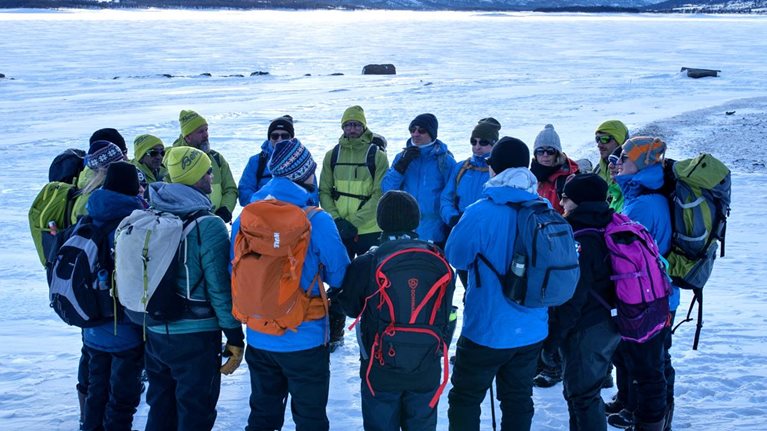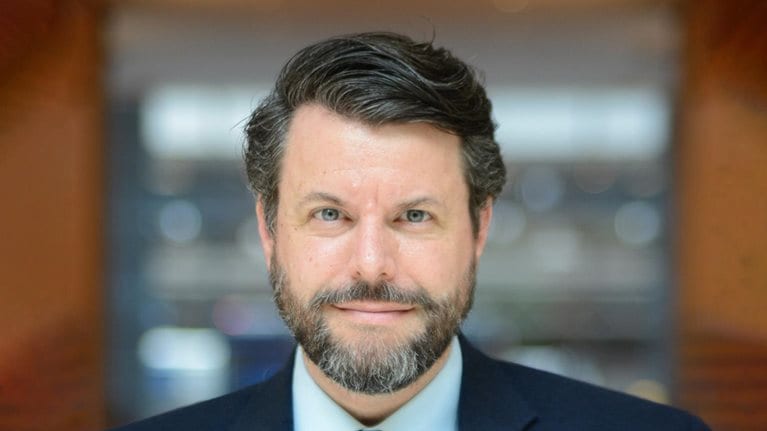In this edition of Author Talks, McKinsey Global Publishing’s Hannah Buchdahl chats with William Ury, negotiation expert and cofounder of the Harvard Program on Negotiation, about his new book, Possible: How We Survive (and Thrive) in an Age of Conflict (Harper Business/HarperCollins Publishers, February 2024). The coauthor of the negotiation classic Getting to Yes: Negotiating Agreement without Giving In shares anecdotes, insights, and strategies gleaned from decades of collaborative problem solving. Ury relates what it means to be a “possibilist”; why a balcony, golden bridge, and third side are key to any successful negotiation; and why it’s possible to resolve the world’s most challenging conflicts. An edited version of the conversation follows.
Why did you write this book?
A few years ago, I was taking a hike in the mountains with my good friend Jim Collins, the author of leadership classics such as Good to Great: Why Some Companies Make the Leap ... and Others Don’t [Harper Business/HarperCollins Publishers, 2001]. He turned to me and asked an unexpected question: “William, you’ve been wandering around the world for a long time, dealing with some of the world’s toughest conflicts—from strikes to boardroom battles to the Cold War and the Middle East. We live in turbulent times. Do you think you could sum up in a single sentence everything you’ve learned that could be of possible use to us today?”
I like challenges. I like simplicity. So on our next hike, I gave it a try. We talked for a while, then Jim turned to me and said, “OK. Now go write the book.”
What is a possibilist, and what makes you one?
Given my decades of work on some of the world’s toughest conflicts, people often ask me, “Are you an optimist, or are you a pessimist?” Now I prefer to answer, “Actually, I’m a possibilist.” As an anthropologist and as a negotiator, I believe in our human potential—in this case, our potential to transform conflicts from destructive fights into creative negotiations. I believe in it because I’ve seen it happen with my own eyes. Whether it’s in business, politics, or wars, I’ve seen human beings not only at their worst but also at their best, rising to the occasion and changing the form of the conflict into constructive, creative negotiations.
Whether it’s in business, politics, or wars, I’ve seen human beings not only at their worst but also at their best, rising to the occasion and changing the form of the conflict into constructive, creative negotiations.
A possibilist isn’t Pollyannaish. Being a possibilist means looking at the negative possibilities and then looking for the positive possibilities, so we can avert the worst and optimize the best. It’s just a question of taking these innate human talents that we have for curiosity, for creativity, for collaboration, and applying them to our tough conflicts. My book is designed to inspire that inner possibilist in each of us.
Why are most unsolvable problems better considered as opportunities?
Possibilists acknowledge the obstacles, then look for the opportunities. I’ve seen that happen time and again. I’ll give you an example from the business world.
A few years ago, a client and now good friend was involved in a bitter boardroom battle with his retail company’s largest shareholder. The battle lasted three years. It had gotten so ugly that everyone thought it was insurmountable. Yet when I sat down for lunch with my counterpart, who was representing the other side, we took a different, possibilist angle. We were open minded, we listened, and we looked. We asked, “How could we help our friends deal with this situation? What is it they really want?” In five short days, we were able to come up with a resolution that both executives signed and a joint statement wishing each other well, and the conflict was all over.
When I asked my friend and client how he felt, he said, “I got everything I wanted, but the most important thing is I got my life back.” His business adversary was equally satisfied, as were the company, the community, and their families. It was a win–win–win solution. Approaching the situation as a possibilist opened up new possibilities. Conflicts are made by humans; they can be solved by humans.
What is the biggest obstacle to a positive negotiation?
We tend to think it’s the difficult person, the difficult client, the difficult colleague, the difficult party. Yet I’ve actually found the most difficult person I ever have to deal with—who gets in the way of positive negotiations—is me. It’s the person I look at in the mirror every morning. In other words, it lies in our natural, human, very understandable tendency to react, to act out of fear, to act out of anger. As the old saying goes, “When you’re angry, you will make the best speech you will ever regret.”
So what’s the alternative to reacting? The alternative is to take a step back from the situation. Imagine the negotiation occurring on a stage in front of you. You’re one of the characters. Other people are the characters. Everyone’s on the stage, getting into an argument. Your mind goes to a mental and emotional balcony overlooking that stage. It’s that ability to “go to the balcony” that’s foundational. The balcony is a place of calm and perspective, where you can keep your eyes on the prize and see the larger picture of how you might be able to navigate that labyrinth.
We think of negotiation as being about influencing the other. In actuality, it’s first and foremost about influencing yourself so you can then influence the other. Negotiation, it turns out, is an inside job. And the best way to start a difficult negotiation is to stop.
When did you learn the importance of going to the balcony?
I probably learned most dramatically the importance of going to the balcony some years ago when I was in Venezuela in the middle of a political mediation. I was meeting with the president, Hugo Chávez, in front of his entire cabinet at midnight. He asked me how things were going, and I made the mistake of saying, “I thought we were making progress.” He said, “Progress?”
I was feeling flustered. I was feeling defensive, and then I remembered the importance of going to the balcony. I thought, “Why am I here? I’m here to calm the situation. Will it do me any good to get into an argument with the president of Venezuela?” So I bit my tongue, and I listened.
Thirty minutes went by without a reaction, and finally I saw his body language change. His shoulders sank, and he said to me in a weary tone of voice, “Ury, what should I do?” That was the faint sound of a human mind opening. I said, “Mr. President, it’s nearly Christmas. Everyone’s exhausted by this conflict. Why not just call a truce? Give everyone a break, a chance to enjoy the holidays with their families.”
He looked at me and said, “You know what? That’s an excellent idea. I’m going to propose that in my next speech.” He clapped me on the back, and his mood had completely shifted. And what I learned in that moment was that the greatest power that we have is the power not to react. It’s the power to go to the balcony.
The greatest power that we have is the power not to react.
We’ve gone to the balcony. Now what?
We all have our favorite ways of going to the balcony. It might be taking a deep breath, taking a break, or going for a walk. The balcony sets us up for success. The next obstacle is that the other side may not be anywhere near where you want them to be.
Both sides tend to dig into positions when things get tough. The other side may be pushing you, pressuring you, attacking, threatening. The secret is to do the exact opposite of what we naturally do, which is that when they push, we push back. That just leads to a stalemate. Imagine that your mind is here, their mind is over there, and in between there’s this chasm filled with doubt, anxiety, and unmet needs.
Our job in a negotiation is to build a bridge over that chasm. In the words of Sun Tzu, the author of the 2,500-year-old Chinese classic The Art of War, the challenge is to build a “golden bridge.” How do we build a golden bridge—a way out for the other side and for you?
Instead of pushing, it means doing the opposite. It means attracting the other side. Instead of making it harder for them, our job is to make it easier for them to make the decision we want them to make. The best exercise is to begin negotiations by writing the other side’s victory speech.
What does it mean to write the other side’s victory speech?
It’s a thought experiment where you imagine that the other side—be it your work partner, your boss, your colleague—has said “yes” to what you want them to do. Now they have to go in front of the people they care about—their constituency, their board of directors, their colleagues, whoever it is—and explain why they’ve said “yes” to your proposal.
What would be their victory speech? How could they explain accepting your proposal as a victory for them? How does it meet their core interests? Think about what their three key talking points would be. Write down that speech. Then think about the criticism or hard questions they might get and how they might answer it.
That exercise of thinking through the other side’s victory speech often takes an impossible situation and unlocks new possibilities. You suddenly visualize success. You start from the end, and you work backward.
What is the role of the third side in effective conflict resolution?
Let’s imagine you’ve gone to the balcony, and you’ve built that golden bridge. Sometimes that brings you over the bridge. But oftentimes in very difficult conflicts, you’re not there because it’s hard for us to go to the balcony and build those bridges. We need help.
Often in difficult conflicts, we tend to reduce things to two sides: us against them. It’s husband versus wife, union versus management, sales versus manufacturing, one political party against the other, or one nation battling another. What we often don’t see is that in any negotiation, in any conflict situation, there’s actually a third side.
Often in difficult conflicts, we tend to reduce things to two sides: us against them.... What we often don’t see is that in any negotiation, in any conflict situation, there’s actually a third side.
What’s that third side? The third side is the surrounding people—be they friends, colleagues, neighbors, bystanders, or allies. They could also be partners or neutrals. That’s the surrounding community. They can help people calm down, go to the balcony, get some perspective. They can help facilitate communication, build that golden bridge, look for those creative solutions, provide assistance. The third side can serve as a container within which even the most difficult conflict can gradually be transformed.
Sometimes that third side takes the form of what I would call a “swarm.” For example, in Silicon Valley, “How do you swarm a problem, a very difficult problem?” would refer to solving a technology problem. We need to swarm our difficult conflicts. We need to bring a critical mass of ideas and influence to bear on these very difficult conflicts, to build a winning coalition for a positive agreement. Often that’s what you need for the third side.
You need all three elements. You need the balcony, which is influencing yourself, tapping into your inner potential. You need the bridge, which is influencing the other party, tapping into the potential that exists between the parties. And then you need to add the third side, which is the potential around the parties, around us. Add all three, and you have the makings of something that can transform even the toughest conflicts.
What are the most challenging conflicts facing the world today?
The most challenging conflicts we face today are probably political conflicts. There’s geopolitical conflicts like the war in the Middle East, the war in Ukraine, tensions in Korea, and tensions between the United States and China. There’s political polarization within our countries, such as in the United States. Those are the most challenging conflicts. Considering all those conflicts, it’s easy to get pessimistic. I want to acknowledge how difficult those conflicts are and, at the same time, take a contrarian view, which is to be a possibilist.
In the 1970s, when I started studying and working in this discipline, we were in the midst of the Cold War—the United States with the Soviet Union. And to almost all observers, it looked impossible. It looked like it was going to continue for generations. There was no end in sight. Regarding the Middle East, Israel and Egypt were the two major military powers. They’d fought four wars in the previous 25 years. It seemed like another war was inevitable. In Europe, in Northern Ireland, Catholics and Protestants had been fighting each other for centuries. People said there was no way that wasn’t going to continue. In Africa, there was a war over apartheid. That was going to continue forever.
Yet what I witnessed when I went to and worked at all these places was how people, through persistent, creative, patient negotiations, began to slowly transform these situations so that the Cold War came to an end. Israel and Egypt made unprecedented peace. Catholics and Protestants in Northern Ireland ended “the Troubles.” Apartheid came to an end.
In all those cases, the conflicts continued in some ways, but the wars ended. They were transformed. So if that could happen, then it’s possible for it to happen again today. And that’s why I wrote the book Possible.
How can anyone turn a personal or professional conflict into a creative negotiation?
The best way to do it is to ask yourself three questions:
- Instead of reacting, how can I take a step back? How can I go to the balcony—to a place of calm and perspective where I see the larger picture?
- Instead of digging into my position and getting into a back-and-forth exchange with the other side, how can I build a golden bridge—an attractive way out—by listening, looking for creative solutions, and asking open-ended questions?
- Instead of reducing the conflict to two sides—us versus them—where’s the third side, and how can I engage it? How can I get people to help facilitate and transform the conflict?
These times aren’t easy. This work can be some of the hardest work human beings can do. But based on all my experience over the past 45 years, it’s possible. I believe it’s possible because I’ve seen it happen—in businesses, in political communities, in the world at large.
I’ve seen the impossible become possible. The good news is that you don’t have to invent the tools. The balcony, bridge, and third side are innate human potentials.
All we have to do is remember it, develop it, and hone it. And if we can do that, we can transform our conflicts. If we can transform our conflicts, there’s no problem we can’t solve. There’s no opportunity we can’t realize. We can transform our lives, and we can transform our world.



